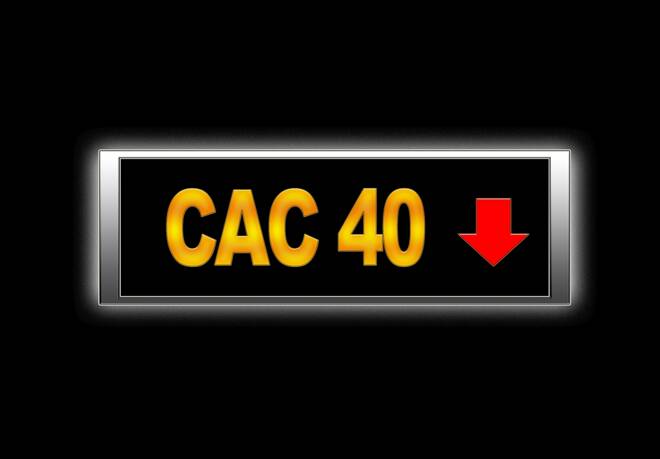Advertisement
Advertisement
European Equities: A Week in Review – 02/07/21
By:
It was a mixed week for the European majors. While economic data was skewed in favor of riskier assets, the continued rise in new COViD-19 cases weighed on risk appetite.
The Majors
It was a mixed week for the majors in the week ending 2nd July.
The DAX30 rose by 0.27%, while the CAC40 and the EuroStoxx600 ended the week down by 1.06% and by 0.18% respectively.
Economic data from the Eurozone and the U.S delivered the majors with support in the week.
From the Eurozone, inflationary pressures softened in June, according to prelim figures, while the Manufacturing PMI hit a record high.
Economic data from the U.S was also positive, with labor market data supporting the FED’s more optimistic outlook.
While the stats were skewed to the positive for the majors, however, rising COVID-19 cases across the world pressured the majors in the week.
The Stats
Economic sentiment figures for the Eurozone in focus on Tuesday.
A pickup in economic sentiment in June provided some support early in the week.
Midweek, German unemployment and Eurozone inflation figures were in focus.
While unemployment numbers were market positive, inflationary pressures across the Eurozone softened in June.
According to prelim figures, the Eurozone’s annual rate of inflation softened from 2.0% to 1.9%.
On Thursday, manufacturing sector PMIs for June were positive, however.
Spain’s manufacturing PMI increased from 59.4 to 60.4, with Italy’s seeing a modest fall from 62.3 to 62.2.
Germany’s manufacturing PMI rose from 64.4 to 65.1, which was up from a prelim 64.9.
France’s manufacturing sector saw growth slow moderately, with the PMI falling from 59.4 to 59.0. This was up from a prelim 58.6.
As a result, the Eurozone’s manufacturing PMI rose from 63.1 to a record high 63.4, which was up from a prelim 63.1.
Eurozone unemployment figures for May were also upbeat, with the unemployment rate falling from 8.1% to 7.9%.
Retail sales figures from Germany were also market positive on Thursday. Retail sales rose by 4.2% partially reversing a 6.8% slide in April.
From the U.S
After a quiet start to the week, consumer confidence figures impressed on Tuesday. The CB Consumer Confidence Index jumped to a 16-month high in June.
Mid-week, ADP nonfarm employment change figures pointed to another sharp increase in hiring. In June, the ADP reported a 692k increase in nonfarm payrolls, following an 886k surge in May.
On Thursday, the focus shifted to the weekly jobless claims and manufacturing sector PMI numbers.
In the week ending 25th June, initial jobless claims fell from 415k to 365k.
Manufacturing sector activity saw slightly weaker growth in June, however, with the ISM Manufacturing PMI falling from 61.2 to 60.6.
While the stats delivered Dollar support, nonfarm payroll data at the end of the week was the key stat of the week.
In June, the government reported a 662k increase in nonfarm payrolls following a 516k rise in May.
In spite of the rise, the unemployment rate edged up from 5.8% to 5.9%.
Economists had forecast nonfarm payrolls to rise by 570k and for the unemployment rate to fall to 5.7%. The participation rate held steady at 61.6% versus a forecasted increase to 61.7%…
The Market Movers
From the DAX, it was a bearish week for the auto sector. Volkswagen fell by 1.90%, with BMW and Daimler declining by 2.18% and by 2.02% respectively. Continental led the way down, however, with a 2.58% loss.
It was also a bearish week for the banking sector. Deutsche Bank fell by 1.71%, with Commerzbank sliding by 5.59%.
From the CAC, it was a bearish week for the banks. BNP Paribas slid by 3.65%, with Credit Agricole and Soc Gen ending the week down by 0.84% and by 1.30% respectively.
It was a mixed week for the French auto sector, however. Stellantis NV fell by 2.13%, while Renault rose by 0.71%.
Air France-KLM ended the week down by 4.21%, while Airbus rose by 1.72%.
On the VIX Index
It was a 2nd consecutive week in the red for the VIX, marking a 5th weekly loss in 6-weeks. In the week ending 2nd July, the VIX fell by 3.52%. Following a 24.54% slide from the previous week, the VIX ended the week at 15.07.
3-days in the red from 5 sessions delivered the downside in the week.
For the week, the Dow rose by 1.02%, with the NASDAQ and the S&P500 ending the week up by 1.94% and by 1.67% respectively.
The Week Ahead
It’s a relatively busy week ahead on the economic calendar.
At the start of the week, service sector PMIs for Italy and Spain will be in focus along with finalized PMIs for France, Germany, and the Eurozone.
With the markets expecting a pickup in service sector activity, expect the numbers from Italy and Spain to draw plenty of attention. According to prelim figures last month, the Eurozone’s services PMI hit a 41-month high in June.
On Tuesday, German factory orders and Eurozone retail sales figures will be in focus along with ZEW Economic Sentiment numbers.
Through the 2nd half of the week, the German economy will remain in the spotlight, with industrial production and trade data due out.
From the U.S, the market’s preferred ISM Non-Manufacturing PMI on Tuesday and weekly jobless claims on Thursday will also provide direction.
China’s Caixin services PMI and inflation data due out on Monday and Friday will also need considering.
Away from the economic calendar, central bank chatter and COVID-19 news will continue to influence.
About the Author
Bob Masonauthor
With over 28 years of experience in the financial industry, Bob has worked with various global rating agencies and multinational banks. Currently he is covering currencies, commodities, alternative asset classes and global equities, focusing mostly on European and Asian markets.
Advertisement
